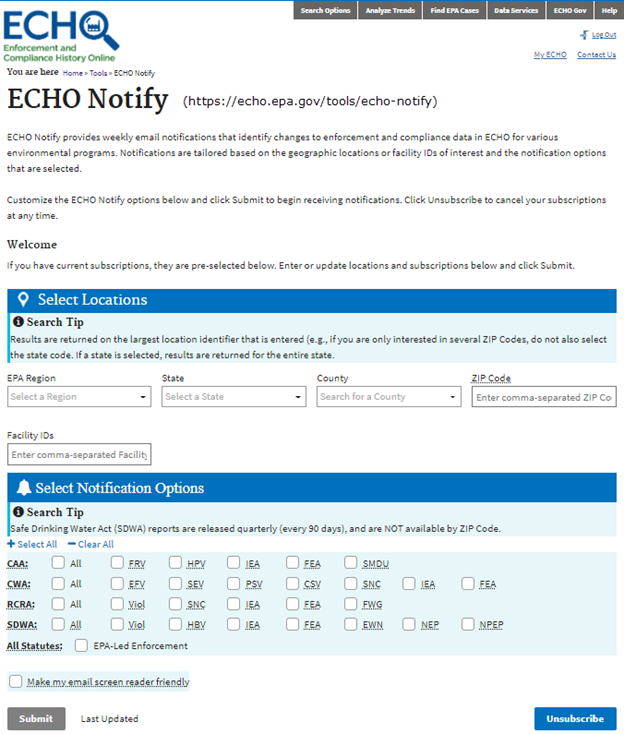Issued: Mar 30, 2022 (10:19am EDT)
If you wish to unsubscribe please do so here: https://epa.mediaroom.com/index.php?s=20300&unsub=1&hide_page_content=1
EPA Announces Appointment of Senior Advisor for Equity to Help Advance Environmental Justice and Embed Equity in EPA Work
Contact: Mary Mears, (212) 637-3673 or mears.mary@epa.gov
NEW YORK (March 30, 2022) - The U.S. Environmental Protection Agency (EPA) today announced that Olivia C. Glenn will join EPA as Senior Advisor for Equity and Chief of Staff to EPA's Regional Administrator Lisa F. Garcia. Ms. Glenn will be helping to guide EPA Region 2's efforts to embed environmental justice and diversity goals into all of its work and will serve as all-around Chief of Staff. She most recently served as Deputy Commissioner of Environmental Justice and Equity for the New Jersey Department of Environmental Protection.
"I am so delighted to have Olivia join me at EPA to help guide and support the talented team here at EPA Region 2 as we all work toward a healthy environment for everyone – with a focus on improving quality of life for communities that are underserved and often overburdened with pollution," said Lisa F. Garcia, EPA Region 2 Administrator. "Olivia brings with her a wealth of experience and a proven track record of advancing EJ principles in governmental policies and programs."
A longtime advocate of ensuring underserved communities have access to the outdoors, Olivia believes all people have a right to experience and enjoy the benefits of nature.
"This is a time when environmental justice and equity issues are among those at the forefront of the nation's priorities," said Olivia Glenn. "It is such a privilege to join EPA's Region 2 as Chief of Staff and Senior Advisor for Equity, ensuring the furtherance of this critical work with our communities and tiers of government in support of Administrator Regan and the Biden-Harris Administration. I look forward to working alongside the knowledgeable and passionate team in Region 2, following the lead of Regional Administrator Garcia to advance equity as an agency-wide imperative."
"New Jersey is the better for Olivia Carpenter Glenn's environmental leadership, and my colleagues and I are proud that the broader region will now have the benefit of her expertise, compassion, and dedication to equity and justice," said Shawn M. LaTourette, the State's Commissioner of Environmental Protection. "From her stewardship of our state parks and forests, to her work furthering the promise of environmental justice, Olivia has left an indelible mark on New Jersey and will be an asset to Administrator Michael S. Regan, Regional Administrator Lisa F. Garcia, and their teams as EPA advances critical efforts to protect and improve the environment and public health across our region and the nation."
Olivia previously led the DEP's Division of Parks and Forestry, appointed in 2018 as its director and managing its 450,000 acres of natural and historic resources. From 2003 to 2009, she worked as the Division's Urban Initiatives and Outreach Coordinator and subsequently served as special assistant to the DEP Deputy Commissioner. Olivia later was a member of the DEP's Environmental Justice Advisory Council, leading its efforts in outreach, education and land management.
Olivia also has worked with the New Jersey Conservation Foundation, making outdoor spaces and trails more readily available to Greater Philadelphia residents, especially people living in Camden. In 2018, the Camden Collaborative Initiative honored her with the Camden Environmental Hero Award. As an NJDEP Deputy Commissioner, Olivia was responsible for advancing state environmental justice and diversity, equity and inclusion goals.
Olivia earned a bachelor's degree in environmental studies from Dartmouth College. She holds a master's degree from the Yale School of the Environment, where she wrote her master's thesis on park revitalization in Camden. In her free time, she enjoys the outdoors, as well as singing and playing the flute, piano and bassoon. Olivia is married and has three children.
EPA expects that Ms. Glenn will begin in her post at EPA on April 18.
Follow EPA on Twitter and Facebook. For more information about EPA Region 2 visit our website.
22-025
To unsubscribe or change your settings click here:
https://epa.mediaroom.com/index.php?s=subscribe&code=pk9P9C6gyXkkd2wBRp4RfpovjUvlVhUhbg



